Biographies
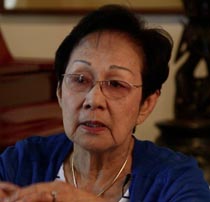 1. Yae Aihara- Internee – Yae was a 16-year-old American citizen on Dec 7, 1941. Her family was living in Seattle, Washington , when her father was arrested. Her father was taken to a Department of Justice camp in Ft Missoula, Montana. The family was taken to an assembly center then on to Minedoka, Idaho. The family decided they would repatriate to Japan in the prisoner of war exchange program. They met their father at Ellis Island. He had previously been at a camp in New Mexico. Fate had it that the family was considered alternates so they were hauled off to Crystal City family camp in Texas. Later Yae started a cosmetics business and was an esthetician for twenty-five years. She is now a docent at the Japanese American National Museum.
1. Yae Aihara- Internee – Yae was a 16-year-old American citizen on Dec 7, 1941. Her family was living in Seattle, Washington , when her father was arrested. Her father was taken to a Department of Justice camp in Ft Missoula, Montana. The family was taken to an assembly center then on to Minedoka, Idaho. The family decided they would repatriate to Japan in the prisoner of war exchange program. They met their father at Ellis Island. He had previously been at a camp in New Mexico. Fate had it that the family was considered alternates so they were hauled off to Crystal City family camp in Texas. Later Yae started a cosmetics business and was an esthetician for twenty-five years. She is now a docent at the Japanese American National Museum.
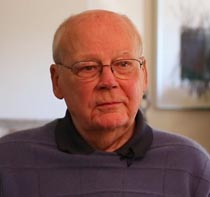 2. John Christgau – Teacher, Writer – Born in Minnesota and moved to California. He attended San Francisco State University and later taught at several high schools. He has authored over 9 books. One from 1985 titled: Enemies: World War II Alien Internment. Iowa State University Press, 2009.
2. John Christgau – Teacher, Writer – Born in Minnesota and moved to California. He attended San Francisco State University and later taught at several high schools. He has authored over 9 books. One from 1985 titled: Enemies: World War II Alien Internment. Iowa State University Press, 2009.
In 2009, John and Heidi Gurcke Donald were part of a group asked to testify to the House of Representatives Judiciary Committee's Subcommittee on Immigration, Citizenship, Refugees, Border Security, and International Law when they had a hearing focused on the U.S. treatment of European Americans and Latin Americans, Japanese Latin Americans, and Jewish refugees during World War II (the Wartime Treatment Study Act)
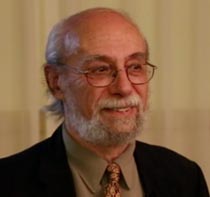 3. Lawrence Distasi - Historian, Writer- Became the president of the western chapter of the American Italian Historical Association in 1982. He and 3 others designed an exhibit about the restrictions put upon the Italians during WWII. The exhibit was titled, Una Storia Segreta, which means a secret story and a secret history. The exhibit traveled for about seventeen years and resulted in national legislation signed into law in November 2000, The Wartime Violation of Italian American Civil Liberties Act.
3. Lawrence Distasi - Historian, Writer- Became the president of the western chapter of the American Italian Historical Association in 1982. He and 3 others designed an exhibit about the restrictions put upon the Italians during WWII. The exhibit was titled, Una Storia Segreta, which means a secret story and a secret history. The exhibit traveled for about seventeen years and resulted in national legislation signed into law in November 2000, The Wartime Violation of Italian American Civil Liberties Act.
In 2001, DiStasi edited the collection Una Storia Segreta: The Secret History of Italian American Evacuation and Internment During World War II (Heyday Books: 2001).
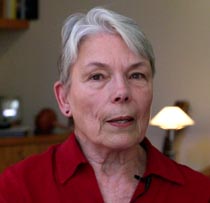 4. Heidi Gurcke Donald – Internee – Heidi was only 2-1/2 years old when her German born father and American born mother were placed on the American Black list in Costa Rica. Werner Gurcke was falsely labeled one of Costa Rica's most dangerous enemy aliens. Shortly thereafter Starr, her mother, was considered "dangerous to the safety of the United Nations" too.
4. Heidi Gurcke Donald – Internee – Heidi was only 2-1/2 years old when her German born father and American born mother were placed on the American Black list in Costa Rica. Werner Gurcke was falsely labeled one of Costa Rica's most dangerous enemy aliens. Shortly thereafter Starr, her mother, was considered "dangerous to the safety of the United Nations" too.
They were hauled off, under horrific conditions, to Crystal City, Texas with their two daughters to be interned. Heidi co-founded the German American Internee Coalition (www.GAIC.info). Heidi also served as an editorial adviser for a report to Congress from the 2005 "Assembly on Wartime Relocation and Internment of Civilians" held in San Francisco.
In 2009, John Christgau and Heidi were part of a group asked to testify to the House of Representatives Judiciary Committee's Subcommittee on Immigration, Citizenship, Refugees, Border Security, and International Law when they had a hearing focused on the U.S. treatment of European Americans and Latin Americans, Japanese Latin Americans, and Jewish refugees during World War II (the Wartime Treatment Study Act)
Heidi wrote a book, We Were Not the Enemy in 2006. She is a graduate of the University of California in San Francisco.
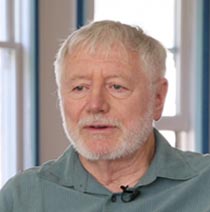 5. Lother Eiserloh – Internee – Lother's father was arrested the day after the attack on Pearl Harbor in Cleveland, Ohio. His mother struggled for 2 years to keep the family of 5 together. The family was eventually reunited at the Crystal City internment camp in Texas. After 2 years in the family camp, they were sent to war-torn Germany as part of the exchange program. Lother is quoted as saying, "My parents had a hard time in Germany. They were really struggling." He continues, "I was having a good time in Germany. It's silly to say but I was, I mean, what 9 year old gets to drive a tank?"
5. Lother Eiserloh – Internee – Lother's father was arrested the day after the attack on Pearl Harbor in Cleveland, Ohio. His mother struggled for 2 years to keep the family of 5 together. The family was eventually reunited at the Crystal City internment camp in Texas. After 2 years in the family camp, they were sent to war-torn Germany as part of the exchange program. Lother is quoted as saying, "My parents had a hard time in Germany. They were really struggling." He continues, "I was having a good time in Germany. It's silly to say but I was, I mean, what 9 year old gets to drive a tank?"
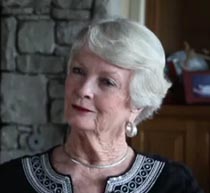 6. Betty Fly – Betty was 11 years old when her father and mother came to work at the Crystal City Texas Internment Camp in 1942. The I.N.S. hired her father to be financial officer and her mother worked as a typist in the camp office. They lived on the other side of the fence. Betty is quoted as saying, "I always felt that the internees were there because they had committed crimes."
6. Betty Fly – Betty was 11 years old when her father and mother came to work at the Crystal City Texas Internment Camp in 1942. The I.N.S. hired her father to be financial officer and her mother worked as a typist in the camp office. They lived on the other side of the fence. Betty is quoted as saying, "I always felt that the internees were there because they had committed crimes."
Henry Roscoe, Betty's father, escorted Fritz Kuhn, head of the German American Bund, back to Ellis Island to be deported to Germany.
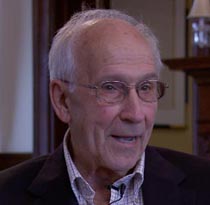 7. Eberhard Fuhr – Internee – Eberhard's parents were interned months before he and his brother Julius were arrested. He was seventeen years old when the FBI came to Woodward High School in Cincinnati, Ohio and pulled him out of class. The brothers were taken to a holding place in Chicago before they were taken by train down to a family internment camp in Crystal City, TX where they met up with their parents.
7. Eberhard Fuhr – Internee – Eberhard's parents were interned months before he and his brother Julius were arrested. He was seventeen years old when the FBI came to Woodward High School in Cincinnati, Ohio and pulled him out of class. The brothers were taken to a holding place in Chicago before they were taken by train down to a family internment camp in Crystal City, TX where they met up with their parents.
Eberhard met his then future wife, Barbara, in the camp. The family was interned for the duration of the war. In fact, they had to tear down the camp and then they were held at Ellis Island until 1947. In September of 1947, Eb and Julius were called up to the front office on Ellis Island. They were told that they were free to go but their tickets to Cincinnati wouldn't be there until the next day. Eb said, "When is the next ferry?" The officer said, "20 minutes." Eb said, "In 20 minutes, I will be on that ferry because you're not gonna change your mind." and the officer said, "Well you can't pack in time." Eb said, "What I don't pack, you can give away, burn up, I don't care, I'm gone!"
Eberhard and his brother were a few of the older children that had a number as an internee. They were not voluntary. They were not taken in with their parents. Rather, they were separately accused.
 8. Eric Gehrman – Internee – Eric was 5 years old when soldiers came to the front door of his home in Costa Rica. His father wasn't there but they came back for him and held his father and the entire family at a German club. On Good Friday they were loaded up on a bus to be taken to the ship that would eventually land in Houston, TX. Later they were sent to the family internment camp in Crystal City.
8. Eric Gehrman – Internee – Eric was 5 years old when soldiers came to the front door of his home in Costa Rica. His father wasn't there but they came back for him and held his father and the entire family at a German club. On Good Friday they were loaded up on a bus to be taken to the ship that would eventually land in Houston, TX. Later they were sent to the family internment camp in Crystal City.
The family was deported to Munich by way of the Gripsholm. Eric remembers, "I got lost, that's how big it was, the Gripsholm. I always had dreams about it, nightmares, getting lost there, and the water, I was so afraid." After 6 years of living in war-torn Germany and France, the president of Costa Rica, Otilio Ulate, was instrumental in helping the family of now 5 return to their home. It wasn't an easy journey home with stops in Tangiers, Portugal, Venezuela, and Panama. Once they were back in Costa Rice, Eric recalls being called a Nazi by his peers. He was 12 years old then.
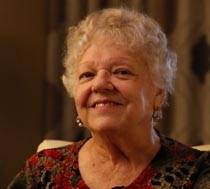 9. Hildegard Mantel Gordon – Internee – Hilde's mother and father raised her in Colombia. In 1941 they moved to Barranquilla. Her father had previously managed the German club in Puerto, Colombia. In 1942, when Hilde was only 6, she found out that her family was considered the enemy. They were shipped to the United States via the Panama Canal. Hilde recounts, "I remember crying on the ship because the men were not allowed to go outside during the passage and I didn't want to leave my father's side."
9. Hildegard Mantel Gordon – Internee – Hilde's mother and father raised her in Colombia. In 1941 they moved to Barranquilla. Her father had previously managed the German club in Puerto, Colombia. In 1942, when Hilde was only 6, she found out that her family was considered the enemy. They were shipped to the United States via the Panama Canal. Hilde recounts, "I remember crying on the ship because the men were not allowed to go outside during the passage and I didn't want to leave my father's side."
They arrived in New Orleans and taken by train to the Greenbrier Hotel in White Sulphur Springs, West Virginia. They were with other German diplomats that were to be exchanged with the American diplomats that were in Germany. They were there for two months, then transferred to Grove Park Inn in Asheville, North Carolina, where they were held a year. After being separated at "The Assembly Inn" in Montreat, North Carolina, the 3 of them were sent to the family camp at Crystal City, Texas.
In 1944 they were deported. The first stop was to Ellis Island and then Germany through Lisbon, Portugal via Gripsholm. Once they landed in Buchloe, Bavaria, Hilde recounts, "Bombing was all around us." In 1948 Hilde returned to Colombia.
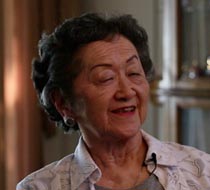 10. Kay Grantham – Internee – On December 7, 1941, the FBI came to Kay's home and took her father away. She was only 15 years old. Her father was taken to the Los Angeles Jail first, then they took him to Missoula, Montana. Later, he was taken to another camp in Lordsburg, New Mexico and Santa Fe, New Mexico. Since father was gone, Kay and her family moved in with other family members living in Santa Monica, CA. Eventually Kay, her mother (who had just given birth), her two brothers, and sister were bused to Manzanar.
10. Kay Grantham – Internee – On December 7, 1941, the FBI came to Kay's home and took her father away. She was only 15 years old. Her father was taken to the Los Angeles Jail first, then they took him to Missoula, Montana. Later, he was taken to another camp in Lordsburg, New Mexico and Santa Fe, New Mexico. Since father was gone, Kay and her family moved in with other family members living in Santa Monica, CA. Eventually Kay, her mother (who had just given birth), her two brothers, and sister were bused to Manzanar.
There they were interned a couple of years. In 1944, they were allowed to meet up with father at the family camp in Crystal City, TX. All the members of the family were finally together except Kay's oldest brother, who went to Illinois. Kay remembers the Texas camp, "We were out on the main road and D4-A was our address, and the other family, since it's a duplex, the other family was a Japanese family from Peru and they spoke Spanish and Japanese, no English whatsoever." Kay was a musician and played the piano for the German cafe in the camp at Crystal City. Kay reveals that her father felt shame and never wanted to talk about the camps during the war years.
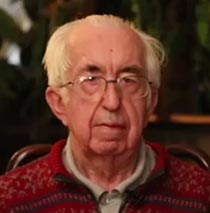 11. Gunther Greis – Internee – Gunther Greis' father, Peter Greis, was arrested at home on the night of December 9, 1941, about 3:00 AM. Gunther did not hear from his dad for about 6 weeks. The family lived in Milwaukee, WI. Gunther's mother struggled to support her four sons. When they found out that Peter was at the Milwaukee Municipal Barracks, they were permitted to visit him. Once Peter's internment was ordered, he was sent to Fort Oglethorpe in Georgia, then Camp Forrest in Tullahoma, Tennessee. He ended up in Fort Lincoln internment camp for men outside Bismarck, North Dakota.
11. Gunther Greis – Internee – Gunther Greis' father, Peter Greis, was arrested at home on the night of December 9, 1941, about 3:00 AM. Gunther did not hear from his dad for about 6 weeks. The family lived in Milwaukee, WI. Gunther's mother struggled to support her four sons. When they found out that Peter was at the Milwaukee Municipal Barracks, they were permitted to visit him. Once Peter's internment was ordered, he was sent to Fort Oglethorpe in Georgia, then Camp Forrest in Tullahoma, Tennessee. He ended up in Fort Lincoln internment camp for men outside Bismarck, North Dakota.
Two of Gunther's brothers, Paul and Walter, joined the Merchant Marines. Gunther. his mother and brother, Siegfried, were going to be deported to Germany with Peter. Gunther recounts "I was horrified. Why would we ever go back to Germany? It was blown to bits and pieces, I was an American, not German!" We tried unsuccessfully to let Walter and Paul know we were leaving." Once at Grand Central Station, they finally reached Walter on Gallups Island.
Gunther continues: We reported to Ellis Island a couple of days before the S.S. Gripsholm was to depart for Germany with its human cargo. Most were slated for exchange. Father had not arrived from the North Dakota camp yet. Where was my father? Upon reaching the Gripsholm, my family was told to stay on board. We stood outside on the rear deck, bobbing up and down in the water, waiting. Finally, someone told the captain of the cutter to bring us back to Ellis Island. All our belongings were gone. The next day we were happy to be reunited with our father. (Greis Story, www.GAIC.info) The family was eventually taken to Crystal City Internment Camp. Two years after the war's end, in 1947, Peter Greis and his wife were released from the internment camp.
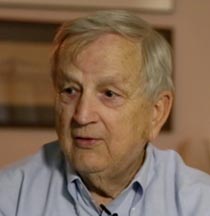 12. Arthur Jacobs – Internee – Art was an American citizen living in Brooklyn, New York. His father, Lambert Detrich Jacobs, was a member of the Pfaelzer Klub Humour. The FBI went to his father's work and arrested him and took him to Ellis Island. Art's mother, Paula, was left to take care of the children. She was distraught and did not know where her husband was. Finally, the officials called her and told her he was on Ellis Island. They visited him many times but one day Paula decided they would stay. Art, his brother, Lambert, and mother now were interned at Ellis Island along with his father.
12. Arthur Jacobs – Internee – Art was an American citizen living in Brooklyn, New York. His father, Lambert Detrich Jacobs, was a member of the Pfaelzer Klub Humour. The FBI went to his father's work and arrested him and took him to Ellis Island. Art's mother, Paula, was left to take care of the children. She was distraught and did not know where her husband was. Finally, the officials called her and told her he was on Ellis Island. They visited him many times but one day Paula decided they would stay. Art, his brother, Lambert, and mother now were interned at Ellis Island along with his father.
Eventually, they were taken to Crystal City to be interned. In December of 1945, the Jacobs family and 101 internees from Crystal City were sent back to Ellis Island. On January 17, 1946, they were deported and sent to Bremerhaven, Germany by way of the S.S. Victory. At 13 years of age, Art is taken to Hohenasperg prison. He was verbally abused. Several months later, he was released and lived in Germany until he was able to get back to the United States. He served in the United States Air Force. He muses, "I made it. I spent 22 years in the military. I returned because I was a patriot. My parents brought me up to be a patriot. That's what we were!"
Art wrote about his story in his book, The Prison Called Hohenasperg, Universal Publishers/uPUBLISH.com, 1999.
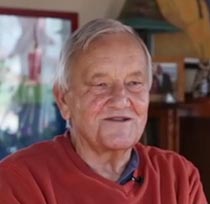 13. Carlo Krauss – Internee - Carlo's father came to America from Pomerania to fulfill his American dream. He became an American citizen and worked in physics research at the University of Chicago. Carlo's father developed a time-measuring machine and nobody knew what to do with it in this country. He got the idea of selling it in Europe so he went back to Greenwich observatory and sold one there.
13. Carlo Krauss – Internee - Carlo's father came to America from Pomerania to fulfill his American dream. He became an American citizen and worked in physics research at the University of Chicago. Carlo's father developed a time-measuring machine and nobody knew what to do with it in this country. He got the idea of selling it in Europe so he went back to Greenwich observatory and sold one there.
This device allowed for better accuracy on the watch. The American government got interested in it and wanted to know what he was doing with it. He proclaims that it was basically a business venture but the U.S. government suspected him of being a spy and arrested him. The family joined him in internment. They were taken to Crystal City, Texas to the family internment camp. Later, the family was released and went back to Chicago.
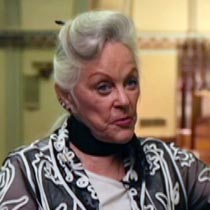 14. Anneliese Krauter – Internee - Anneliese's mother & father, Alma and Otto, left Germany because there was no future for them over there. Inflation was rampant. There were riots in the streets and demonstrations against the Treaty of Versailles. They found a new life in the United States in Yorkville, New York. Otto was by trade a butcher and a sausage maker. Alma managed the room they rented in their home and was a stay-at-home mom.
14. Anneliese Krauter – Internee - Anneliese's mother & father, Alma and Otto, left Germany because there was no future for them over there. Inflation was rampant. There were riots in the streets and demonstrations against the Treaty of Versailles. They found a new life in the United States in Yorkville, New York. Otto was by trade a butcher and a sausage maker. Alma managed the room they rented in their home and was a stay-at-home mom.
They were members of a few German organizations, one was the German American Vocational League and the other was the Deutschamerikanischeberufsgermeinnschaft or DAB for short. On July 10, 1942, Otto was in the butcher shop when two FBI agents came to their home across the street to arrest him. Anneliese recounts, "We had heard through our organizations that people were being picked up and questioned and then let go back home. Some of them were not released and some of them were friends or acquaintances of my father and mother." "Well, guess what? That morning it happened to Poppy."
Otto was accused of being a spy and working underground. So many factors worked against Otto during a time of Nazi hysteria. Eventually the entire family was interned in Crystal City, Texas, the dusty little Spinach Capitol of the World. Early in 1944 the family was sent back to Ellis Island to be deported to Germany by way of the Gripsholm. Anneliese remembers:
My brother and I were very close. We saw everything differently than our parents and I think we had more of an awareness. My parents were strictly in a survival mode; keep us together, let's survive this! Where Freddy, my brother, and I would be, 'Man, nobody ever told us about this! We'd sit in these trains that were overloaded with people and everybody was sad or freaked out or morose. It was a totally grey society, totally different from the German society that we were a part of in New York. I mean, we were happy people, productive people. We practiced our traditions. We lived in the Melting Pot. Not just the Germans, but the Italians, the Irish, the Romanians, it had been a happy time in New York. And here we are now in Germany and getting ready to survive the war.
Anneliese's book, From the Heart's Closet (The Schatzi Press, 2005) tells of her childhood experience with the American Internment Program.
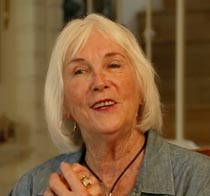 15. Elizabeth Suzy Lechner Kvammen – Internee - Suzy and her sister Lori were interned with their mother and father in 1944. Their father, Karl Lechner, was taken from their home in Chicago in 1943. He originally was taken to the men's camp in North Dakota. Suzy's mother, Eleanor, wanted to join her husband with her two daughters. The government relocated him to the family camp in Crystal City, Texas, where they could be together.
15. Elizabeth Suzy Lechner Kvammen – Internee - Suzy and her sister Lori were interned with their mother and father in 1944. Their father, Karl Lechner, was taken from their home in Chicago in 1943. He originally was taken to the men's camp in North Dakota. Suzy's mother, Eleanor, wanted to join her husband with her two daughters. The government relocated him to the family camp in Crystal City, Texas, where they could be together.
As part of the exchange program, they were repatriated to Germany in December of 1944. Their ship, the Gripsholm, landed in Marseille, France, and they were escorted by American soldiers by train to Karl's Village in Bavaria. Suzy remembers, "We were placed on trains and packed in there like cordwood. There wasn't room for everyone." They struggled in their village in war-torn Germany. Suzy maintains, "My mother was motivated by the love of her family and wanted to keep the family together."
She also adds, "My mother saw how hard it was for a single woman to live while her husband was interned. And this is something that was very difficult in those days. My mother came to America indentured with nothing but her suitcases, ends up in Germany with nothing but her suitcases, her only belongings; comes here with her children with nothing but her suitcases. This woman had to restart her life three times. Now, I tell you, that takes a lot of courage."
Suzy's story is portrayed in the book, Sing to Me PaPa, by Patricia McCune Irvine, Xlibris Corporation, 2000.
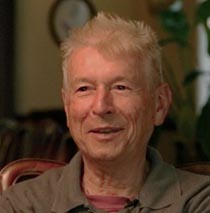 16. Charles McCollister – Son of Internment Camp Commander - Charles' father, Leon McCollister, worked for the U.S. Border Patrol in the late 1930's. When war broke out, Leon was assigned to work at an internment camp in Kennedy, Texas. When the first family internment camp was opened at Crystal City in 1942, Leon was sent to open it. He had worked there for 6 months when the government brought in Joseph O'Rourke, who became the permanent head for 6 years.
16. Charles McCollister – Son of Internment Camp Commander - Charles' father, Leon McCollister, worked for the U.S. Border Patrol in the late 1930's. When war broke out, Leon was assigned to work at an internment camp in Kennedy, Texas. When the first family internment camp was opened at Crystal City in 1942, Leon was sent to open it. He had worked there for 6 months when the government brought in Joseph O'Rourke, who became the permanent head for 6 years.
Charles remembers, "Most of the people lived in the town that worked at the camp, and also there was a fence, it was like, you know, a guarded camp and they had a fence and patrol guards and they were armed." Leon was second in command and he was in charge of the education and personnel department at the camp. Charles muses, "The guards all knew us, so we would go in and I would like to go to the general store to see what they had, because they had things that we could not get during the war. Everything we had was canned and they had everything fresh."
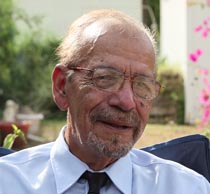 17. Richard Santos – International Research Historian who has authored and co-authored 37 books, over 3,000 articles and a number of television documentaries. Richard tells us:
17. Richard Santos – International Research Historian who has authored and co-authored 37 books, over 3,000 articles and a number of television documentaries. Richard tells us:
Because I am a historian, I was very displeased and outright angry at the way the internment of alien families was recorded that are being given to junior high and high school and college students in which emphasis is placed on the Japanese only and not the Germans who suffered just as bad and were treated just as bad or good as the Japanese. But unfortunately, the internment of the other aliens, the members of the Axis powers, like the Italians, the Bulgarians, the Romanians, the Czechoslovakians – they're not recorded. And they're not reported in the history books.
So that in our textbooks, we mention only the Japanese Americans and we give the impression that they were all from California, which, again, that's incorrect. Because the U.S. government went to great lengths to get both Japanese and Germans from the Latin American countries and bring them for internment in the U.S. So to me as a historian, I wanted to set the record straight. And I've been at this now for 10 years trying to get people to understand what happened here, and that it was an injustice to intern U.S. born citizens just because their father or mother had been born in Germany or Japan. But these were U.S. citizens who were being interned.
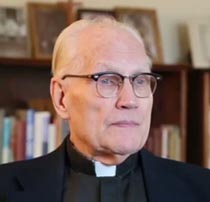 18. Edmund, Horst, Schafer- Internee - When Edmund's parents, Karl and Anna Schafer came over to the U.S. in June of 1938 they lived in Wisconsin. Karl worked at the German restaurant, Karl Ratzsch's Restaurant, and his mother rented out furnished rooms in the apartment building where they lived at 413 East State Street.
18. Edmund, Horst, Schafer- Internee - When Edmund's parents, Karl and Anna Schafer came over to the U.S. in June of 1938 they lived in Wisconsin. Karl worked at the German restaurant, Karl Ratzsch's Restaurant, and his mother rented out furnished rooms in the apartment building where they lived at 413 East State Street.
Karl had become an American citizen but Anna had not found time to become an American citizen before the war broke out. But she attended 2 years of night school in Milwaukee to learn English and the Constitution. When Edmund was almost 3 years old he remembers how his parents had been active in the local organization called the Bund. Two days after the attack on Pearl Harbor, Anna Schafer was taken from her home by the FBI. Father, Karl, and Horst were left at home.
Edmund asserts, "It wasn't easy to have a German name like Horst during those years. And I remember when I started going to school, some children even called me a Nazi horse for example. One day my mother went to school and said, "Now you will call him by his second name, Edmund." Later Anna came home to get Horst and was to report back to the federal building for detainment. Anna and Horst/Edmund were taken to the home for "wayward girls" in Wauwatosa. This was a convent called the Cloister of the Good Shepherd. It's where Wisconsin Luthern College stands today. Twelve weeks after Anna's internment she and little Horst were released. She was released from parole on April 25, 1944.
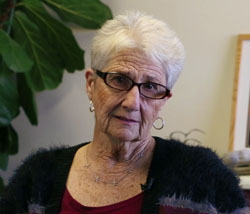 19. Sigrid B. Toye – Child of Internee - J. Edgar Hoover created the "Custodial Detention Index". It was also known as the ABC list. This list was a master list of civilians whom the FBI would arrest and detain in the event of war or national emergency. The list placed groups and individuals into one of three categories according to their perceived levels of danger. Sigrid's father, Eugen Banzhof, was placed on the A list. He was a businessman who was an independent United States sales representative for Thyssen steel.
19. Sigrid B. Toye – Child of Internee - J. Edgar Hoover created the "Custodial Detention Index". It was also known as the ABC list. This list was a master list of civilians whom the FBI would arrest and detain in the event of war or national emergency. The list placed groups and individuals into one of three categories according to their perceived levels of danger. Sigrid's father, Eugen Banzhof, was placed on the A list. He was a businessman who was an independent United States sales representative for Thyssen steel.
When Sigrid was four years old, Eugen was taken from their home in Los Angeles. Sigrid tells us, "I knew that our life had changed." She continues, "Even at that age children are so intuitive. And they may not know the facts but they understand." Sigrid and her mother, Emmy, didn't know where the authorities had taken Eugen. Seven days later they found out that he had been taken to Terminal Island Correction Facility. From there, he was taken to a camp in Griffith Park – later to String Town, Oklahoma for approximately 12 months. Then, he was sent back to Tuna Canyon in Los Angeles. Sigrid asserts, "My mother was only allowed to visit once a month, but I was allowed to visit because I was an American citizen. My mother's American friends would take me to see my father once a week." Sigrid's father refused to allow her and her mother to join him in internment without realizing how difficult life would be for them in the community. He was released after 3 years and several months.
Sigrid recalls, "I took my children to Dachau when they were young. I wanted them to see that. It's a really quite moving, a horrible, moving, experience." She continues, "And there was a tour and the minute I stepped foot in the barracks, I burst into tears. And even describing it to you, I feel teary right now. So whatever that means, it's still there. It's a cellular memory perhaps of some kind. I really don't know. I think this whole experience has probably impacted the reason I'm doing what I'm doing right now, somehow, this way and that way." She announces, "I've been in practice for 32 years and I am a child psychologist.
Sigrid produced a short film,, Black & White, it tells her story when she discovered her father was taken by the FBI.